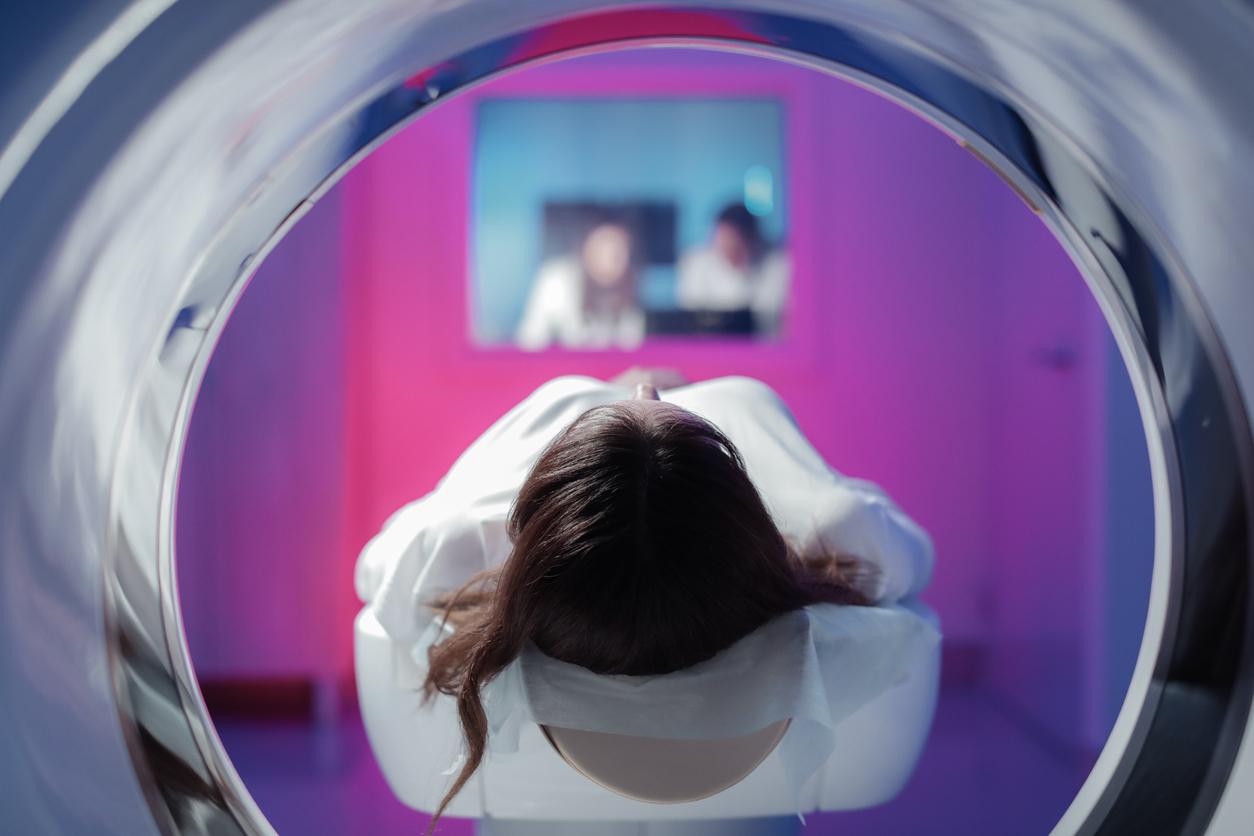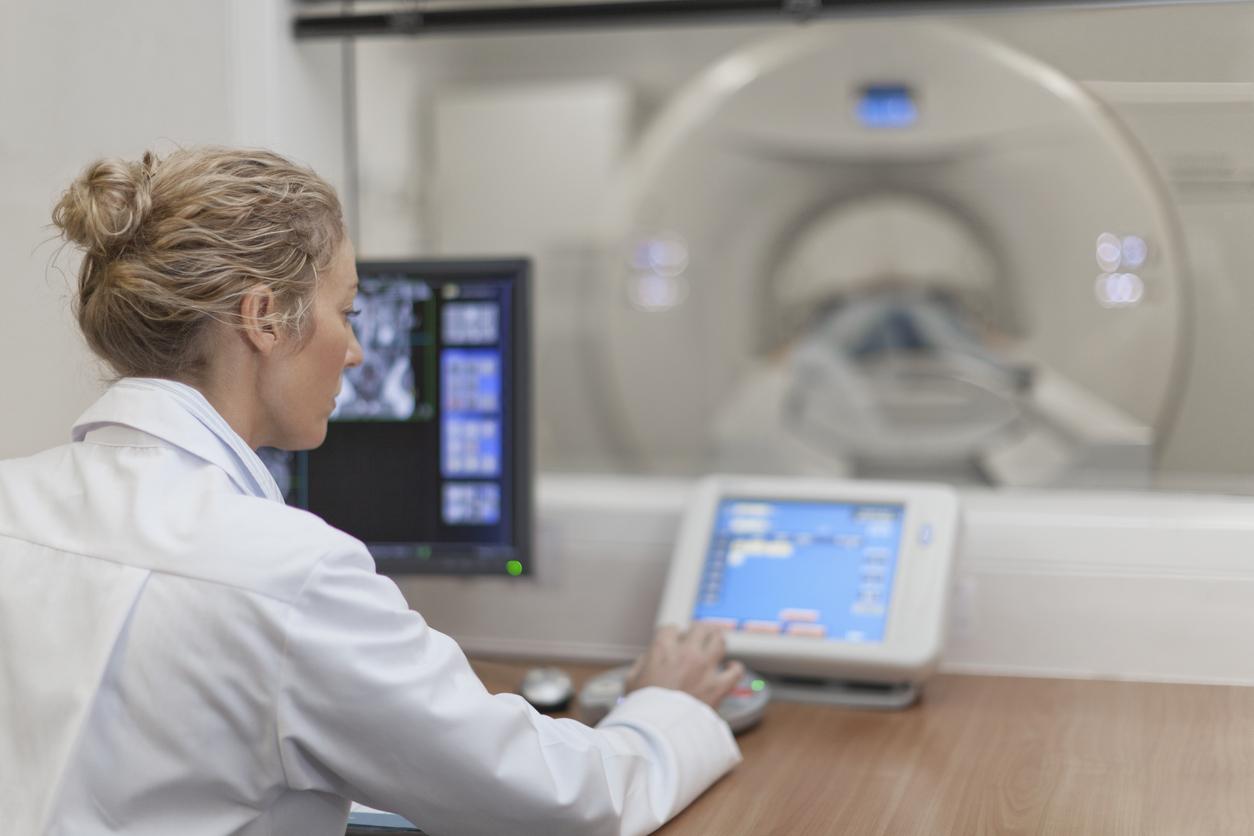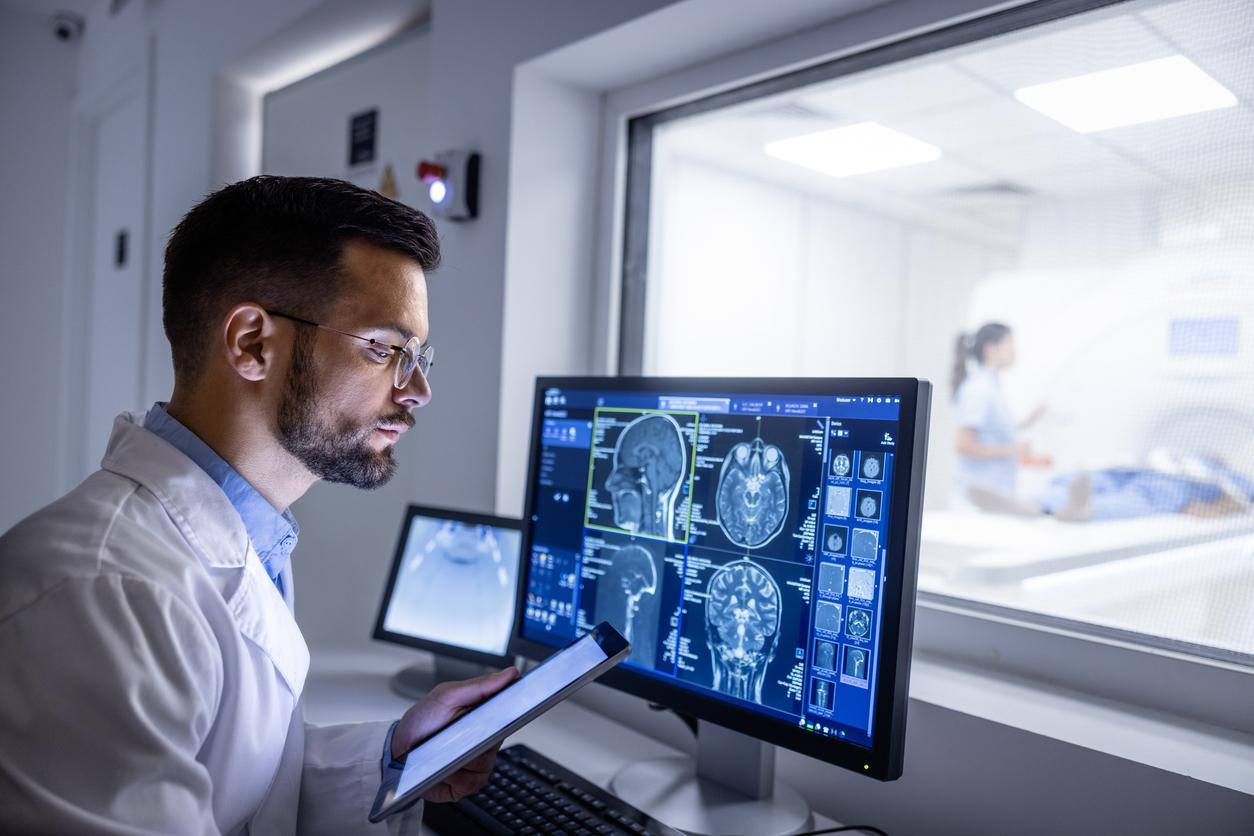How does that work?
The doctor refers you for an MRI scan, because he would like to look at your body from the inside. But what exactly is an MRI scan? How does it work? And are there any risks involved?
The abbreviation MRI stands for magnetic resonance imaging. Roughly speaking, an MRI scan provides an accurate picture of the following body parts:
• brain (function), spinal cord and nerves
• muscles
• tendons and ligaments
• heart (function)
• abdominal organs
Previously, the MRI scan was also called an NMR scan. NMR stands for nuclear magnetic resonance. Because this name evoked an image of nuclear reactions and harmful radiation in many people, this name is no longer in use.
How does it work?
In an MRI scan, certain signals are generated in the body with the help of a large strong magnet and radio waves. These signals are picked up again by an antenna. So no X-rays are used.
A computer then processes the signals into an image that can be viewed on a screen. This technique makes it easy to make cross-sections of the body or certain organs as if they had been sliced.
Preparation
You must go to the radiology department of the hospital for an MRI scan. In general, you can eat and drink as usual before the examination, but it is wise to check with your doctor to be sure. It is pleasant to wear flexible, non-constricting clothing.
No metal objects may be taken into the examination room. So keep an eye out for hairpins, bra underwires, metal zippers and buttons and straps. Glasses, dentures and hearing aids are also not allowed in the scan room.
When the examination involves the head or neck area, it is important not to use make-up or hairspray. This is because it may contain substances that can influence the magnetic field.
the scan
During the examination you will lie on a table that is slowly pushed into a tunnel. The front and back are open. You will not feel the magnetic waves, but the MRI is accompanied by a loud thumping sound. That’s why you get headphones and you can bring your own CD.
It is important to lie as still as possible and to relax as much as possible. Some people experience this as unpleasant. The tunnel can also have a claustrophobic effect on humans. Depending on the body part to be examined, the examination takes 30 to 90 minutes.
A lab technician will watch and keep in touch with you via the intercom. If there is something wrong, you can always warn the lab technician by pressing a button.
Contrast agent
Sometimes it is necessary to inject a contrast medium through a blood vessel in the arm. This agent makes certain tissues more visible. In MRI, gadolineum is usually used. You will not notice anything from the injection. Very occasionally, gadolineum leads to side effects such as watery stools, intestinal cramps, nausea and vomiting.
The outcome
You will not experience any hindrance from the research afterwards. If contrast medium has been injected, it is important to drink a few extra glasses of water.
You will never be told the result immediately. An MRI exam yields 100 to 150 images and these are first reviewed by radiologists. The results are then forwarded to the treating physician. You can discuss the results with the doctor about a week after the examination.
Hazards
Not everyone can have an MRI done. For example, if the body contains metal particles. You can think of metal particles in the eye, implants in the ear and metal vascular clips in the head.
It is also not possible to undergo an MRI scan with a pacemaker, subcutaneous insulin pump or certain heart valves. During the first twelve weeks of pregnancy, a doctor should be consulted first.















